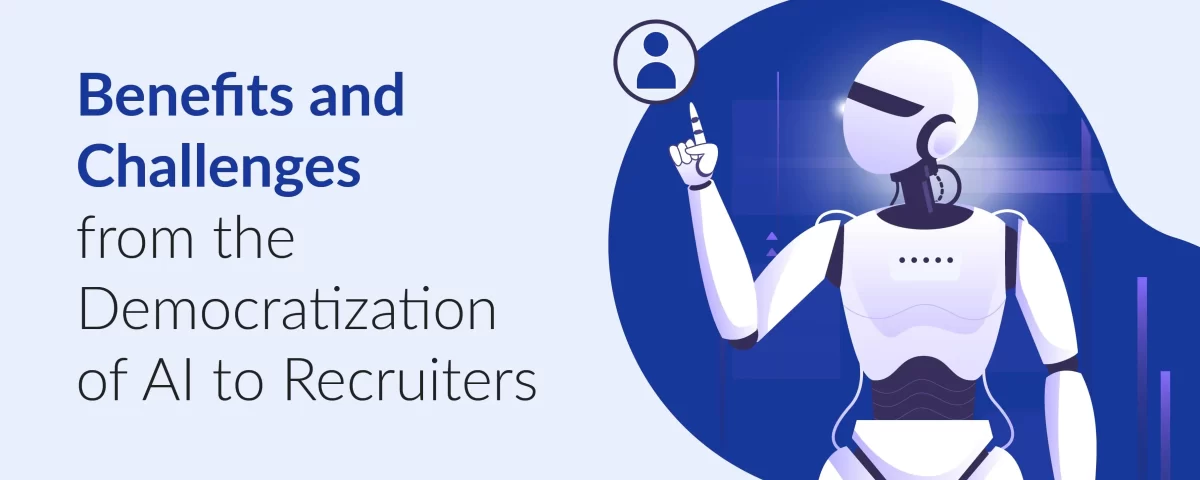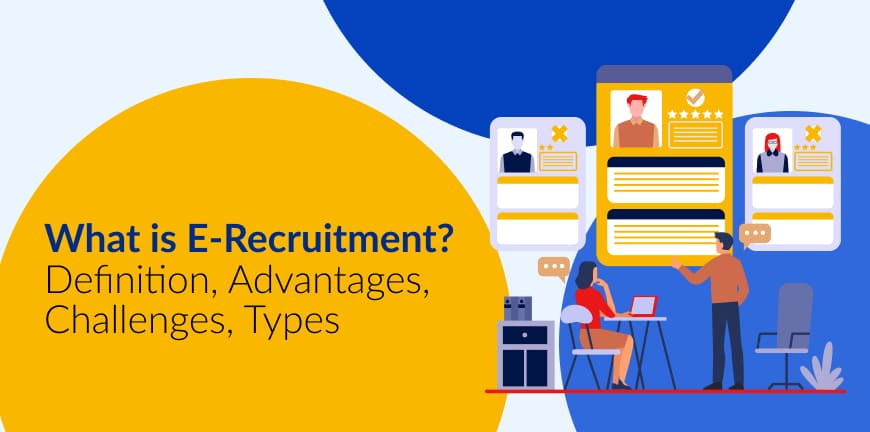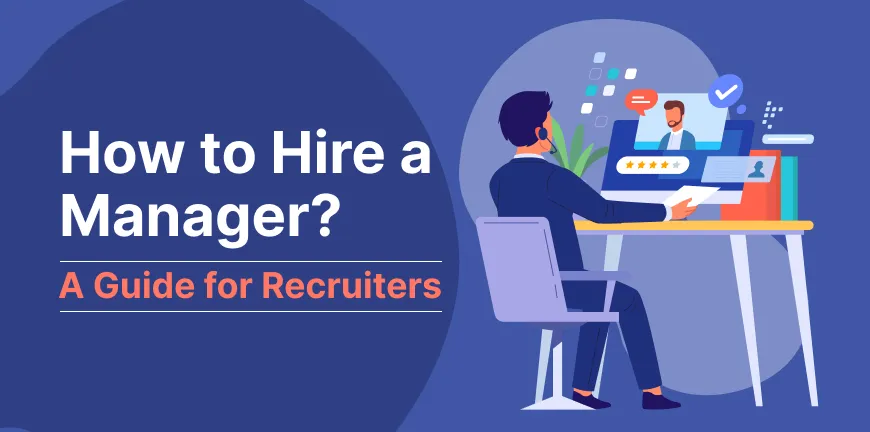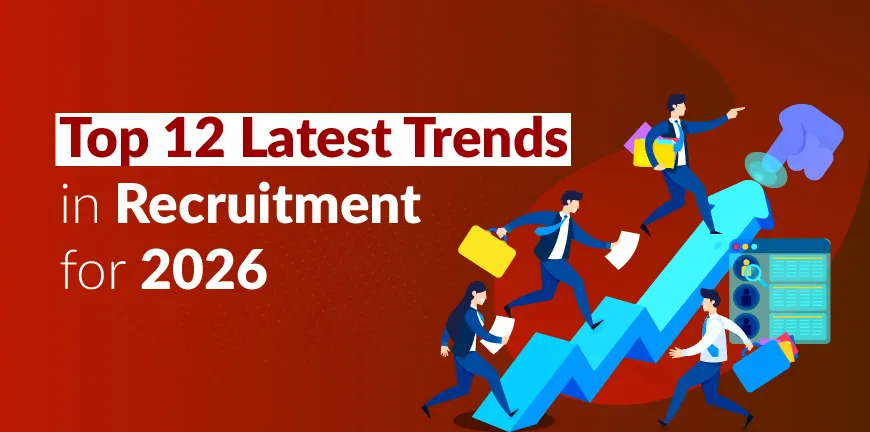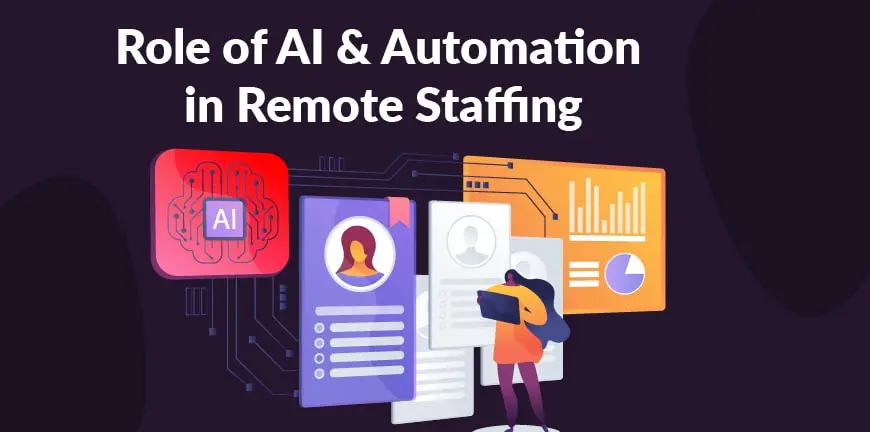
The Role of AI and Automation in Remote Staffing
19/08/2024
What Is Talent Attraction? Introduction, Benefits, Features
21/08/2024AI is half the future of technology, and that’s a bold statement, given the technological advancements we have already made in several new areas. Essentially, AI is competing with other technologies for our attention, but it appears that AI will occupy a significant portion of our time in the future. The surge in AI/ML talent in India itself is nearly 30%, and we are still falling short.
Everyone’s talking to AI, so why should recruiters be left behind? Recruiters are prompting too, and AI responses are getting faster and faster at finding answers, with each new update to biggie AIs like OpenAI’s ChatGPT 4.0 and Google’s very own Bard. With the release of Gemini (the intelligence of which Google has recently integrated into its search function as SGE), it is expected that Google will get more buy-in for AI from governments, organizations, and other individuals.
Such diversification and applications of AI across industries will lead to the creation of new roles. And the creation of such new roles will give more importance to the role of the recruiter. But there’s a problem. Some say that the democratization of AI will impact HR negatively, too. In this blog, we look at why you need to try AI for recruitment if you have not already, and why AI can be a thorn in the foot if you are trying to achieve specific results from it.
What are the Benefits of AI to Recruiters?
1. Automated Screening and Recruitment
By using an interface based on ChatGPT, which chats with hundreds of candidates concurrently, asking relevant questions about their skills and technical knowledge, trying to gauge their general attitude towards work, HR can bring down the time required to shortlist candidates from possibly weeks to a day at most. This also brings down any human bias in hiring. But it doesn’t get rid of bias entirely. More on this a little later!
2. Employee Onboarding and Training
Once a candidate is selected, the next phase of HR’s work has only begun, and perhaps the harder one, that of onboarding the selected candidates, now employees. In the onboarding process, ChatGPT or Bard can ease the process of onboarding by clarifying employee queries as and when they arise. Employees can ask multiple queries on several topics, whether it’s information about company policies, procedures, or any other uncategorized questions.
3. Employee Satisfaction Surveys
How do you gauge employee satisfaction levels? Is there any dissent that could potentially be dangerous for your company? You can understand all this with just a prompt in ChatGPT or Bard, asking it to generate questions for a survey, and when that survey is answered, to go back to ChatGPT and ask it to prepare more questions considering the answers received in the previous survey. This will help to pinpoint any concerns that the employees may have and solve them.
4. Performance Feedback and Mentoring
The performance feedback for employees can happen in a much more constructive way, through a continuous chat-based interface, driven by ChatGPT or Bard. Through chat, it is possible to ask relevant questions to employees, and based on the feedback and answers collected from them, their peers, and superiors, it is possible to understand how a project is progressing.
5. Conflict Resolution and Employee Assistance
Conflicts at the workplace can lead to employee discontent, loss of motivation, unnecessary waste of time, lack of faith in the HR department, and other issues. How can ChatGPT help? ChatGPT or Bard can not only work as a self-service portal, if integrated into the system, but it can also resolve conflicts by providing the right advice. Generative AI is not a replacement for a human counsellor, but it can handle the initial phases of counselling well, where information is gathered, and not so crucial information is provided. The next step, of course, is to consult a human counsellor.
What are the Challenges of AI Democratization to Recruiters?
The problem with democratizing the use of AI, or continuing down the path we are going now are plenty. That is not to say that access to AI must be limited in any way. Since the Internet is so widespread now, we must ask, how can we decide who is to access what kind of AI?
Definitely a tough question to answer. It is because of this that we anticipate that AI will continue to be used just as it is used now, and recruiters cannot ignore it, because their managers won’t. Executives would be convinced, thanks to the cost and time savings of replacing human tasks with AI. This is when they might have to encounter the following challenges, other than losing their jobs to it.
1. Bias
The lack of training data, poor quality of data, and conflicting annotations can lead to bias in the resulting AI. It has been proven that AI has racial bias when it comes to identifying crimes and criminals, especially in facial identification. There might be bias in hiring, too.
2. Negative candidate experience
First impression is the best impressions. Accept it or not, but in many situations, this is so true. With AI taking over the process of shortlisting and screening resumes, it’s a whole different ballgame right now. It does increase the speed of recruitment. But the lack of a human touch in the early stages of hiring will be felt. Candidates may also be asked questions they are not comfortable with if the AI is given the freedom to do so.
3. Lack of transparency
Sometimes, the companies do not make it clear that an AI tool is being used for recruitment, and they may not be prepared for it. On the flipside, companies may want candidates to think they are interacting with a human being, so that they get the answers they would come up with naturally and not fabricated, thinking it is AI. So, do you mention you are using AI to begin with, or do you not? This is a Gordian Knot indeed!
4. Loss of data and lack of data privacy
This is a major issue in several countries and is affecting corporations as well. AI has leaked organizational data, which could be that of customers or even employees. Imagine the personal details of your leaders, the ones you have secured with great effort, being leaked on the Internet. To stop this from happening, legal contracts must be made with the AI company itself.
5. Building diversity in hiring
Building diversity in hiring is already not an easy task, especially for mid-sized companies that are now consciously making an effort to hire more people from different backgrounds, building a culture of diversity and inclusion in their companies. With AI in the picture, things are more complicated. What are the rules for diversity that the AI is using? How will the AI shortlist candidates to ensure there is diversity, and what questions will it ask? These are some challenging questions.
Final Words
AI is not final, and though it is half of the foreseeable future, it is not even halfway there, actually. And AI being fully there does not necessarily imply a Terminator-like doomsday world, though it could happen when it is fully developed, and fully capable machines start building fully capable machines.
The recruiter will still be there, with AI recruiting humans for the jobs it doesn’t want to do, and what it believes will not only be a waste of time but a ‘waste of metal’ too! As it stands today, AI is very beneficial to humans, and there is no replacing its efficiency and time savings with any other solution. Only time will tell how the relationship between man and machine will evolve and how it will affect recruitment and recruiters.
Contact Us For Business Enquiry

Amit Saproo
Amit Saproo is the Head of Operations at ALP Consulting with nearly 17 years of experience in Executive Search, RPO, Leadership, and IT & Engineering recruitment. He leads nationwide recruitment programs across Technology, BFSI, and R&D domains, driving strategic hiring solutions for diverse client needs. Amit excels in building and managing high-performance teams that deliver scalable, end-to-end recruitment and consulting services.

